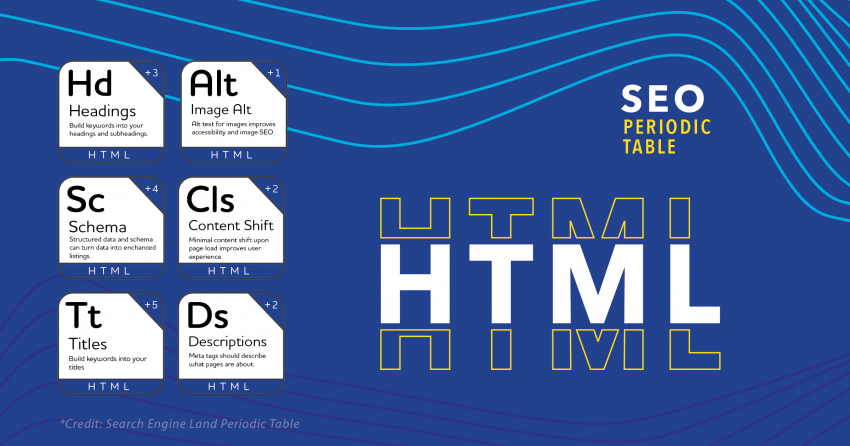Based on the SEO Periodic Table Developed by Search Engine Land
When it comes to HTML and SEO, it's easy to overlook the small stuff. However, tiny tweaks can significantly elevate your AEC-related content in search engine rankings while simultaneously providing value to your readers. Let's dive into the HTML components you should focus on to optimize your online presence effectively.
Craft Irresistible Titles for SEO Impact
Creating a title that's both keyword-rich and engaging may seem challenging, but it's absolutely doable—and essential. An effective title serves a dual purpose: it helps search engine bots understand your article's content, and it hooks potential readers right from the search results.
For example, this article covers SEO strategies with a particular focus on HTML within the AEC industry. Ideally, our title should include all of these key terms: "SEO," "HTML," and "AEC." Did we do it? This approach enhances both search engine visibility and user engagement.
Use Headings to Organize and Optimize
Headings are not just organizational tools; they're also crucial for SEO. Incorporating your target keywords in headings and subheadings can substantially impact how search engines understand your content. But it's not all about pleasing the bots; well-crafted headings also improve user experience by offering an organized and visually appealing structure.
This means that each heading should contain keywords, along with any other words or concepts that might engage our readers further.
Implement Schema Markup for Enhanced SERP Presence
While schema markup might not directly boost your organic rankings, it can make your listing more appealing on Search Engine Results Pages (SERPs). In simple terms, schema is back-end coding that enables enhanced descriptions and site links under your page title on SERPs. By setting you apart from competitors who don't utilize schema, this feature assures potential visitors of your site's relevance to their search query.
Search for our website in your favorite search engine. Notice the subsections listed right under our site's name? That's the magic of schema markup at work. This nifty feature not only sets us apart in search results—because, let's face it, not many sites are using it yet—but also reassures you that our website has exactly the content you're searching for. Now search for your site. Is there room for improvement?
Write Click-Worthy Meta Descriptions
Meta descriptions are those brief summaries that appear under your site title on SERPs. They play a vital role in helping both search engines and potential readers understand your content. Always include your target keywords in the meta description to serve the dual purpose of SEO optimization and clear communication.
Optimize Images Through Alt Text
Images are essential for enriching your content, but it's crucial to go the extra mile with image alt text. Alt text serves primarily as an accessibility feature, describing what the image shows. From an SEO perspective, these descriptions also allow search engines to present your images more accurately in search results. In most website platforms, you can add alt text to your images directly within the media library.
Example of Alt Text: `<img src="/aec_building_design.jpg" alt="Architectural design of a sustainable AEC building">`
Eliminate Content Shift for Seamless User Experience
Ever click on a link, only to have the content shift and throw off your navigation? That's known as content shift, and it's universally frustrating. While severe content shift can affect SEO, the primary concern here is ensuring a smooth user experience.
Ultimately, when you optimize HTML for SEO, you're not just making your site more palatable to search engines; you're improving readability, accessibility, and the overall quality of your content. For the AEC industry, mastering these elements can result in more site visits, higher engagement, and, ultimately, increased business opportunities.






